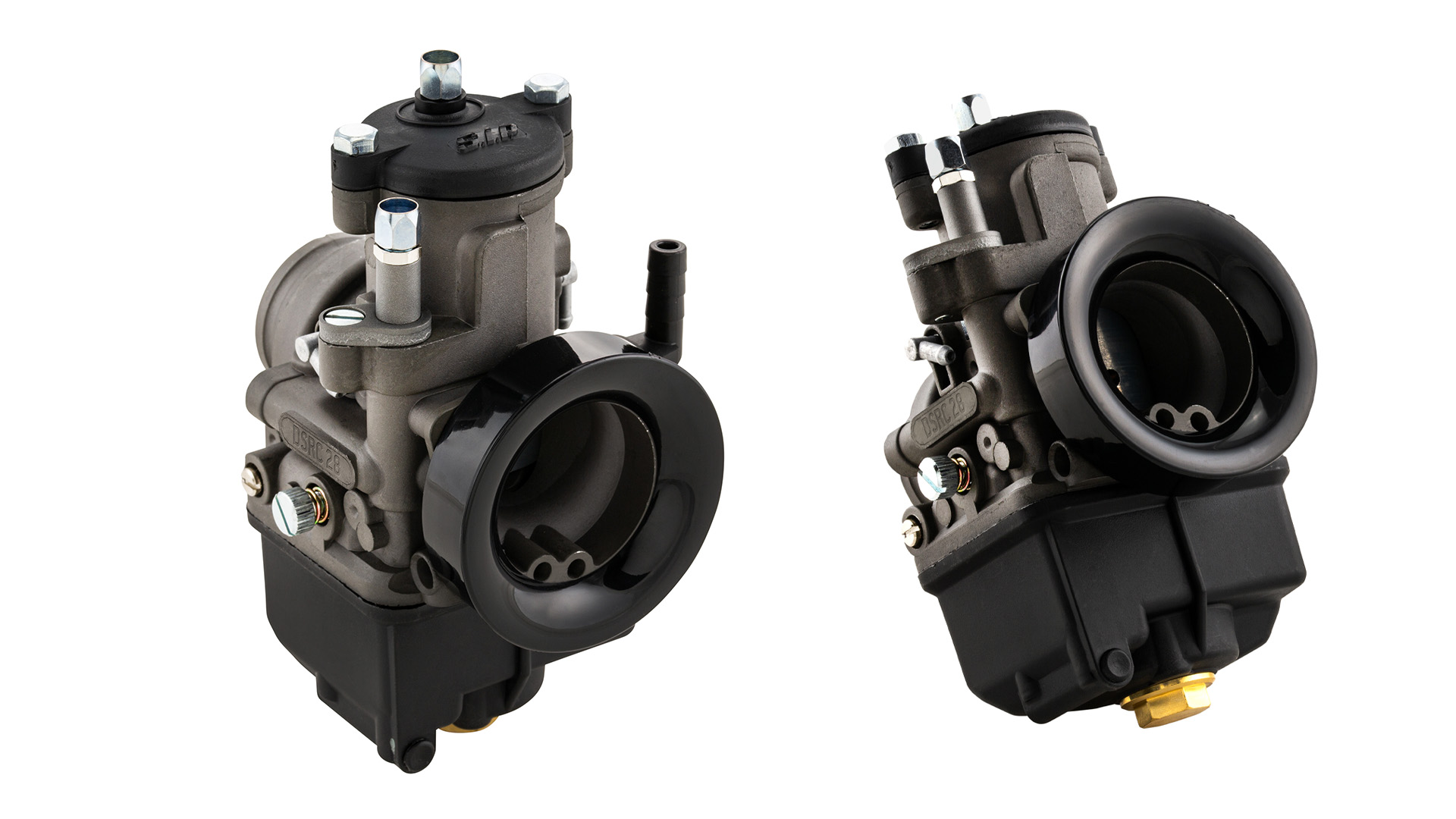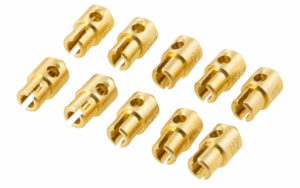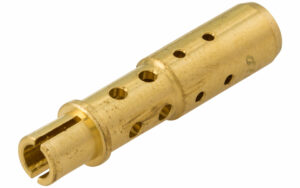“The spark plug should be fawn-colored” – this is the rule of thumb in screwdriver circles. This refers to the color of the spark plug after a run. Even if it is not a conclusive characteristic that the engine runs perfectly, it can certainly be concluded that the engine runs neither too lean nor too rich. Engines that run too lean often sound very cleanly tuned, reach high RPMs and deliver high power.
The evaporating gasoline also helps to cool the engine, which is why the negative characteristics do not appear at first. If the mixture contains too little fuel, it burns at higher temperatures and at the same time no heat can be dissipated by evaporation. This is why too lean a mixture often leads to piston sticking or a hole in the piston.
But a mixture that is too rich should also be avoided. If the fuel content is too high, the engine loses power and wastes fuel because there is not enough oxygen for efficient combustion.
But that’s enough of an introduction before we move on to the structure. For those who would like more detailed information on how a carburetor works, our article “The Central Connection of Carburetors” provides all the necessary information.
Structure of the carburetor
A carburetor is made up of various components, some of which are very delicate and sensitive, whose interaction enables an optimum supply of fuel mixture to the engine. A wide selection of carburetors for any model is available in the SIP Scootershop.
1. throttle slide
The air supply to the engine is controlled with the help of a regulator called a throttle slide. By turning the throttle grip while riding, the position of the throttle slide can be adjusted. At full throttle, the throttle slide is thus fully open; at a corresponding half throttle, it is thus only half open. On some carburetor models, there are special throttle slides with cutouts of different sizes on the underside, allowing the amount of mixture provided to be fine-tuned even more.
2. main jet
The main jet controls the amount of gasoline in the air-fuel mixture when the throttle slide is fully open and is usually the key instrument for adjusting whether an engine is running too rich, too lean, or just right. A large number of the main nozzle stands rather for a rich, a lower accordingly for a lean engine run.
The experts at SIP Scootershop offer a variety of different main jets to achieve a good starting position for tuning.
However, the functions of the main jets differ depending on the type of carburetor:
- Dell’Orto carburetors (PHB, VHB) are made to let the main jet (HD) act exclusively from 3/4th to full throttle slide stroke. Here it is recommended to fully tune all other elements of the carburetor and only add a main jet last. The needle range should be adjusted here exclusively by the shape of the needle and the size of the mixing tube.
- SI carburetors from Dell’Orto work in exactly the opposite way. Here, all other elements of the carburetor depend on the main jet. That’s why here you have to start the adjustment work by finding the right main jet (full throttle).
- Mikuni and Keihin carburetors (as well as the inexpensive replicas, e.g. from Koso and Polini) work differently than Dell’Orto and also regulate the flow into the mixing tube via the size of the main jet. Here the mixing tube and needle cannot be isolated. Here the main nozzle already has an effect from half throttle.
3. Idle Jet
The idle jet provides a steady fuel supply at idle and low throttle. The number of the nozzle corresponds to the size of the hole for the gasoline passage. The rules regarding the numbers correspond to those of the main nozzle, i.e. large number (rich), small number (lean).
4. float and float needle valve
To ensure consistent performance, the carburetor requires a constant level of gasoline in the float chamber. Should this happen, however, a condition known colloquially as “runaway” occurs.
A float and rubber-tipped needle allow the fuel level to remain consistent. When the gasoline level is low, the float sinks and opens the float needle valve to allow fuel to flow in. When the fuel level rises, the float closes the valve to stop the overrun. All individual parts from float to float chamber cover are available for purchase from SIP online store.
5. mixture adjusting screw
The mixture adjustment screw regulates the amount of fuel in the mixture with the throttle slide closed and the idle speed.
6. air screw
The air screw adjusts the amount of air in the idle mixture.
7. choke
The choke provides a rich mixture when the engine is started cold, so that starting is easier when starting.
8. mixer tube
The mixer tube mixes the gasoline with air before it exits into the carburetor funnel for better combustion. The diameter of the mixing tube and the position in the carburetor funnel influence the mixture ratio.
On many Dell’Orto carburetors, you can select the diameter of the mixing tube to release more or less passage (= richer or leaner) between the needle and the mixing tube inner diameter. Mikuni and Keihin control this passage via the main jet, which is screwed onto the bottom of the mixing tube.
Again, the rule is: large mixing tube diameter and at the same time thin needle for a rich engine run, a small mixing tube diameter and a thick needle for a lean run.
9. needle
The needle controls the flow of gasoline when the throttle slide is partially open and works in conjunction with the mixing tube.
To finally achieve the targeted condition of a fawn-colored spark plug requires many test drives and patient screwdrivers*. Anyone who has no experience in this tuning should ideally consult experienced workshops, as incorrect tuning can lead to the often serious consequential damage mentioned at the beginning.
In case of doubt, it is better to choose a slightly too rich tuning, whereby the motto “a lot helps a lot” should not be applied here either.
In a second part of our carburetor series, we will share options for tuning, cleaning and other tips and tricks in the area of carburetors. Until then, have a nice, sunny and accident-free Vespa summer!






Comments (1)